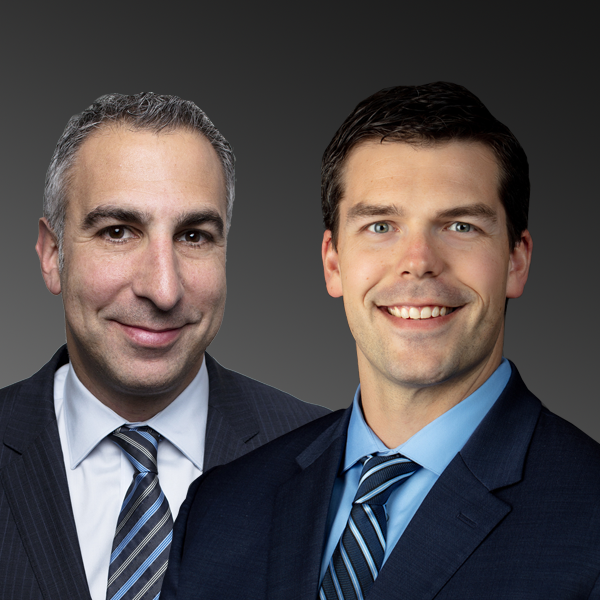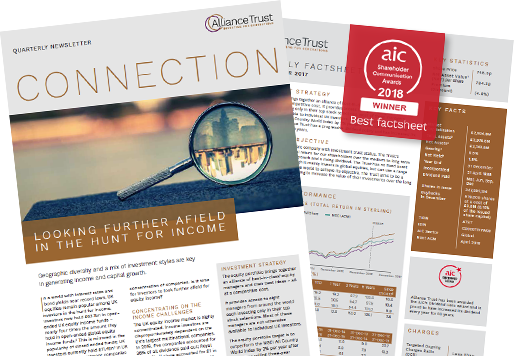Mining for profits from Global Equities
As Alliance Trust sells mineral rights that date back to early 20th-century America, to focus exclusively on investing in a diversified portfolio of high-conviction global equities, we take a look back at the Trust’s colourful history.
Three Dundee-based mortgage and land companies – the Dundee Investment Company, the Dundee Mortgage and Trust Investment Company and the Oregon and Washington Trust – merged in 1888 to form Alliance Trust.
The Oregon and Washington Trust had been established to provide loans to immigrant farmers on the west coast of America, and Alliance Trust continued to advance capital to these pioneering settlers, who used it to buy land.
“Dundee to Oregon seems a bit of a stretch, but they did it and did it very successfully,” said Charles Munn, author of Investing for Generations: A History of Alliance Trust, which was published by Dundee University Press (since taken over by Edinburgh University Press) in 2013.
“It was a very vibrant time as far as the investment business is concerned. Quite a number of early trusts had similar origins to Alliance Trust. Some were formed to fund the building of railways in America, and what railways were interested in was land. A lot of Scottish investment companies did very well out of land.”
For Alliance Trust, the focus was agricultural land. America’s agricultural sector thrived during the First World War, due to the volume of food exported to Britain. The interwar years saw a change of fortunes, however.
“When the war came to an end, American agriculture went into a depression,” said Munn. “It was strange, because the rest of the American economy was booming – it was the Roaring Twenties and the era of the motorcar and flappers – but agriculture was in the doldrums.”
In 1925, the board of Alliance Trust decided to exit the mortgage business and “concentrate on building a proper investment trust”, according to Munn. It had to foreclose on a lot of the mortgages. Many farmers simply deserted their land, particularly those in the ‘Dust Bowl’ – the drought-stricken Southern Plains region, which suffered severe dust storms during a dry period in the 1930s. As high winds and choking dust swept from Texas to Nebraska, people and livestock were killed and crops failed.
“The Trust acquired a lot of land there,” said Munn. “They spent the years before the Second World War trying to do something sensible with it.”
MINERAL RIGHTS
Some of the land was leased to farmers. Other parts were sold, often to American insurance companies, but not without the mineral rights being retained.
A feature of North American land law – and Scots law until this day, for that matter – is that surface rights and mineral rights attached to a property can be separately owned and traded.
“This point was not missed in Dundee, and when Alliance Trust sold off large tracts of foreclosed real estate in the 1920s, the mineral rights were retained wherever possible for periods of up to 50 years, and sometimes in perpetuity,” said John Newlands, author of Put Not Your Trust in Money, an official history of the UK investment trust sector.
The standard royalty on mineral discoveries was one eighth of receipts. The first real windfall for shareholders of Alliance Trust came in 1932.
“The discovery of sizeable oil deposits on the 6,000-acre Cormier plantation, Louisiana, produced royalties for the Trust which would total more than $2 million over the next 25 years – all gained by careful attention to small print,” said Newlands. “The discovery also gave its name, the Alliance Sands, to a geological formation in southern Louisiana.”
From oil and coal to uranium – a real money-spinner during the 1950s, when the American government was stockpiling uranium for bomb-making purposes – tens of millions of dollars in royalties have flowed back to Dundee since. Last year, the mineral rights earned the Trust more than £2.1 million in income.
“That’s not to be sniffed at,” said Munn, who served as chief executive of the Chartered Institute of Bankers in Scotland for almost 20 years.
TIME MOVES ON
The Trust has diversified significantly since the 1930s, moving first into fixed income and then global equities.
“Alliance Trust had a very small but efficient research organisation going in Dundee, and before long had investments in more than 1,000 companies all over the world,” said Munn, who spent two days a week for five years researching and writing his book, mainly from the minutes of board meetings and annual reports, but also from ‘oral history’ – interviews with those who have worked for Alliance Trust over the years. (“It was a lot of fun to write,” he said.)
Still based in Dundee, Alliance Trust is today one of the UK’s largest investment trusts. Its pioneering attitude to investment has helped it stand the test of time.
In 1987, it introduced the first investment trust PEP (personal equity plan), and in 2008, following the merger with the Second Alliance Trust, became a constituent of the FTSE 100 index.
In 2017, the board appointed Willis Towers Watson as investment manager and introduced its new investment approach. This provides access to nine best-in-class managers, each picking their highest-conviction stocks. The resulting diversified but high-conviction portfolio aims to provide shareholders with more consistent outperformance.
The Trust’s focus on business simplification and listed equities, has led to a number of changes, including the conditional sale of execution-only trading platform, Alliance Trust Savings, its office building at West Marketgait, Dundee, as well as the sale of its private equity investments and mineral rights.
The Trust had 1.3% of its assets in non-core investments valued at £33.6 million at the end of 2018, including 0.5% in mineral rights worth £12.9 million. Over the course of the year, the proportion of assets invested in global equities rose from 90.7% to 97.4% – a figure that should soon stand at 100%, according to marketing and communications manager, Mark Atkinson.
“We’ve sold half [of the mineral rights] already, with the remainder due to be sold in the next few months,” he said. “It represents the end of an era, but the board believes it’s better for shareholders to invest in a proven strategy of high-conviction equity managers, than a hodgepodge of mixed assets. Besides, the mineral rights are now a very small proportion of assets, costly and time-consuming to manage, and we expect the equity portfolio to produce sufficient income to keep paying a progressive dividend, with ample reserves available in lean years. Maximising investment returns for shareholders trumps nostalgia. Time moves on, and so must the Trust.”
Jennifer Hill is a freelance journalist.






